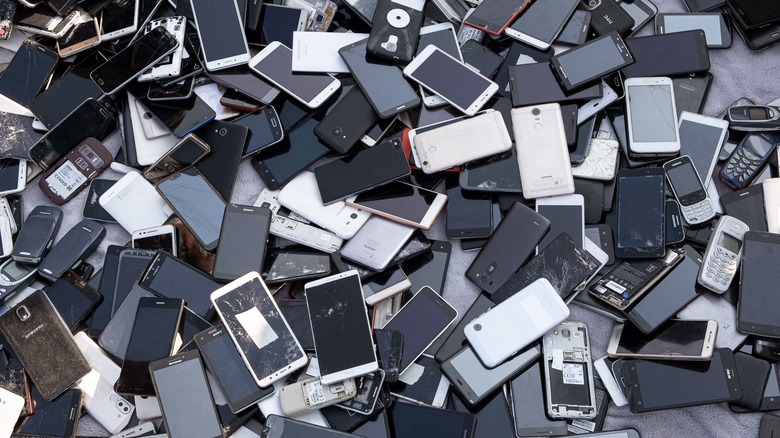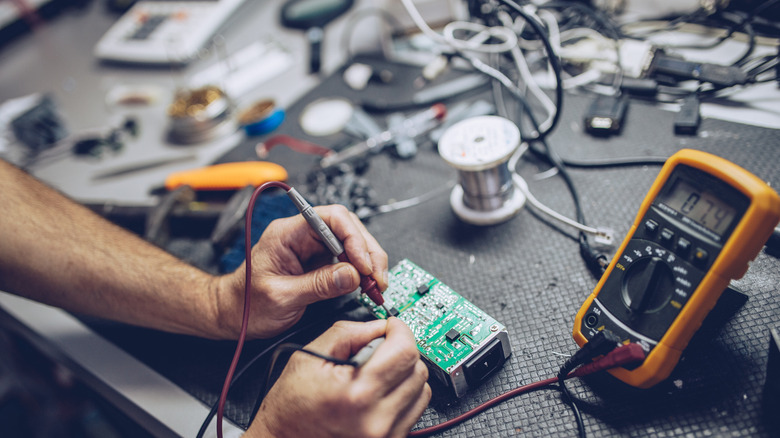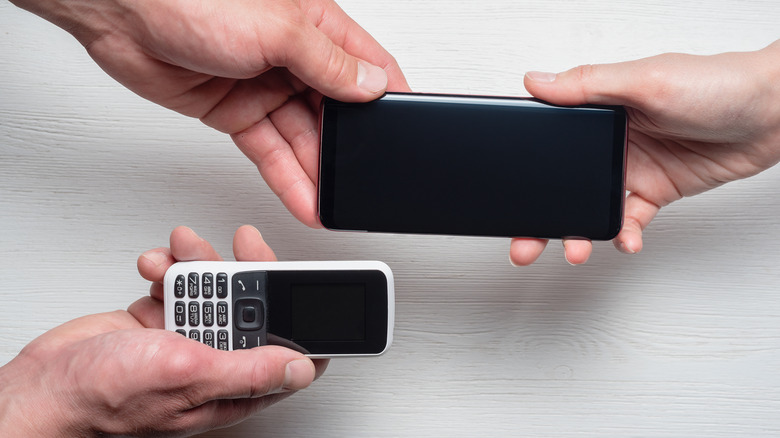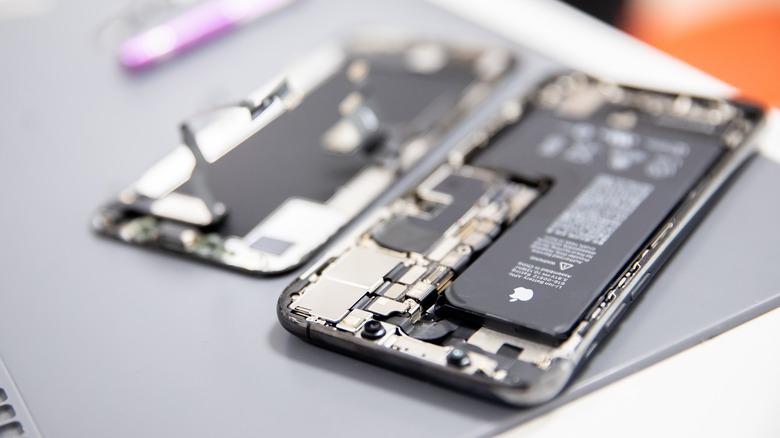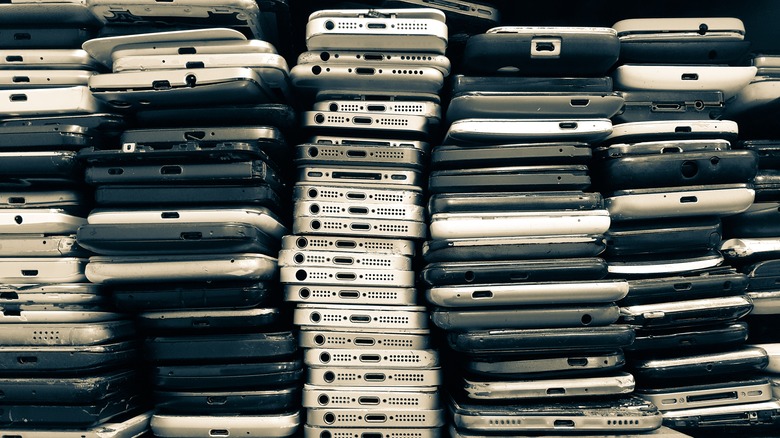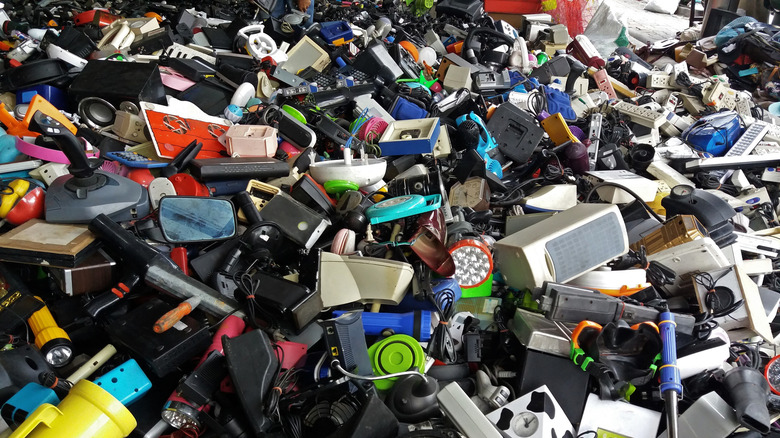How To Dispose Of Old Electronics The Right Way
For the modern man, electronics are part and parcel of our everyday life. From the phones we have in our pockets to the computers that we use for work, technology has become ubiquitous in the human experience. However, progress comes at a price, and the one we pay for our gadgets is that it affects our environment. Through the years, e-waste has become an important issue for a variety of intersectional reasons, such as the ongoing metal shortage and its impact on human health.
According to The Round Up, the total e-waste generation is expected to reach 67 million tons by 2030 worldwide, with Asia and America topping the list as its top contributors. Aside from the problematic mining practices that gather the raw materials for manufacturing, there is also the effect of using non-renewable energy to charge them throughout their lifespan. However, it's our relationship with aging electronics (and how we part with them) that may make a difference.
Unfortunately, for the ordinary person, it can feel frustrating to not know how to deal with a growing number of gadgets that no longer have a place in their life. If you're looking for ways to unload your old gadgets, here are some tips on how to dispose of them in the right way.
Making repair the first option
Before you even think about disposing of your electronic device, checking if it's still possible to fix it can make all the difference. While some gadgets are definitely more expensive to repair than replace, there's still hope to repair others, especially if they are still under warranty. In some cases, manufacturers will have special clauses for factory defects and recalls, which you can make use of. If your device does not fit the criteria for free repair, you still have two options: repair it yourself or get it repaired professionally.
While it's possible that you don't have the technical skills to repair an electronic device right away, it can be a fun little side experience to go on YouTube and try to fix it yourself. Alternatively, some tech companies, such as Google, have partnered with firms like iFixit to offer DIY repair kits for some of their devices. In some cases, manufacturers can still help you repair a device that is out of warranty for a fee. Should the cost be manageable, the repaired device can appear as good as new and even have an extended warranty.
With a repaired device, you can continue to use it until the end of its lifespan. Or, if you do choose to upgrade, you can opt to donate this working device to other people who may still have use for it.
Trading in
If you're due for a necessary upgrade, you may want to trade in your device. By trading in your device, you give it a chance at a second life with another owner. Not to mention, you can get a discount on your next gadget, which can hopefully last you another few years of use. Although it can be tempting to trade in your old Android phone to Amazon in exchange for gift cards, it's often recommended to trade in your device with its original manufacturer. A key reason it makes sense to trade in with where you got your device is to make sure your data is protected throughout this process.
In some cases, smaller buy-and-sell retailers don't have the same consumer protections in place, which means bad actors can retrieve your personal photos or information without your consent. Another is that an external repair facility may not be able to adequately repair your device back to optimal form, which means its next user may not be able to use it for long before it needs to be replaced again.
Alternatively, trading your device in with its official manufacturer means there's a chance your old device gets repaired with a company guarantee. With this, your device may end up back in the hands of a person who can't afford the newest model but can use your old device repaired to a standard suitable for use.
Selling for parts
While the market is filled with aftermarket parts for almost every kind of gadget out there, it's not always everyone's first choice. After all, aftermarket parts may fit the right way, but they don't always work up to standard and could have possible issues with compatibility. Often, aftermarket parts aren't tested to the same standard as original manufactured parts, so many independent repair centers opt for original manufactured parts instead.
However, some manufacturers don't necessarily sell original parts to independent repair centers, especially for older models of gadgets they're trying to phase out. With this, repair centers often have to be more creative with how they acquire the parts used to repair devices on the chopping block. A common way that unofficial repair centers do so is by buying broken or old devices. Although their issues can't be fixed, they have parts that can be used to fix an entirely different issue on another device.
Recycling
When all else fails, and your electronics have nowhere to go but out, there are still some things you can do to make it easier and safer for the people handling its end-of-life, especially gadgets with batteries. Prone to catching fire, batteries can be dangerous when not disposed of or recycled properly. According to the U.S. Environmental Protection Agency (EPA), battery terminals should be taped, and each battery should be kept in separate plastic bags.
In general, each manufacturer will have their own recommendations for how to dispose of or recycle their devices, so if you're not sure, you can check their websites for their programs. In 2021, Samsung even launched an initiative called Galaxy Upcycling at Home, wherein it turns old phones into smart home devices. Alternatively, you can check Earth 911, one of North America's most extensive recycling databases, for the nearest recycling center for electronics near you. To use this database, you can select electronics under the quick search function and type your zip code.
Holding manufacturers accountable
As companies push the premise of consumerism and forced obsolescence, more and more electronics are ending up in the trash. Then, these devices are shipped to landfills, where they release toxic chemicals into the earth and microplastics into the water and end up polluting the environment in one way or another. For this reason, it's crucial to understand that the role of conglomerates and manufacturers in cleaning up their supply chain is still the most critical path for e-waste disposal.
However, there's still hope, especially with companies like Apple recycling more each year. After all, there's only so much an ordinary consumer can do, especially in a world where proper electronic waste disposal requires not just specialized knowledge but also equipment. Thankfully, leading tech companies like Apple have been working to develop robots that could better recycle their products.
If possible, lobbying these corporations to take ownership of their environmental impact can make the most difference. In addition, electing officials who take the issue of taking care of the environment seriously can also help ensure laws are made to incentivize better and more efficient electronics disposal.
